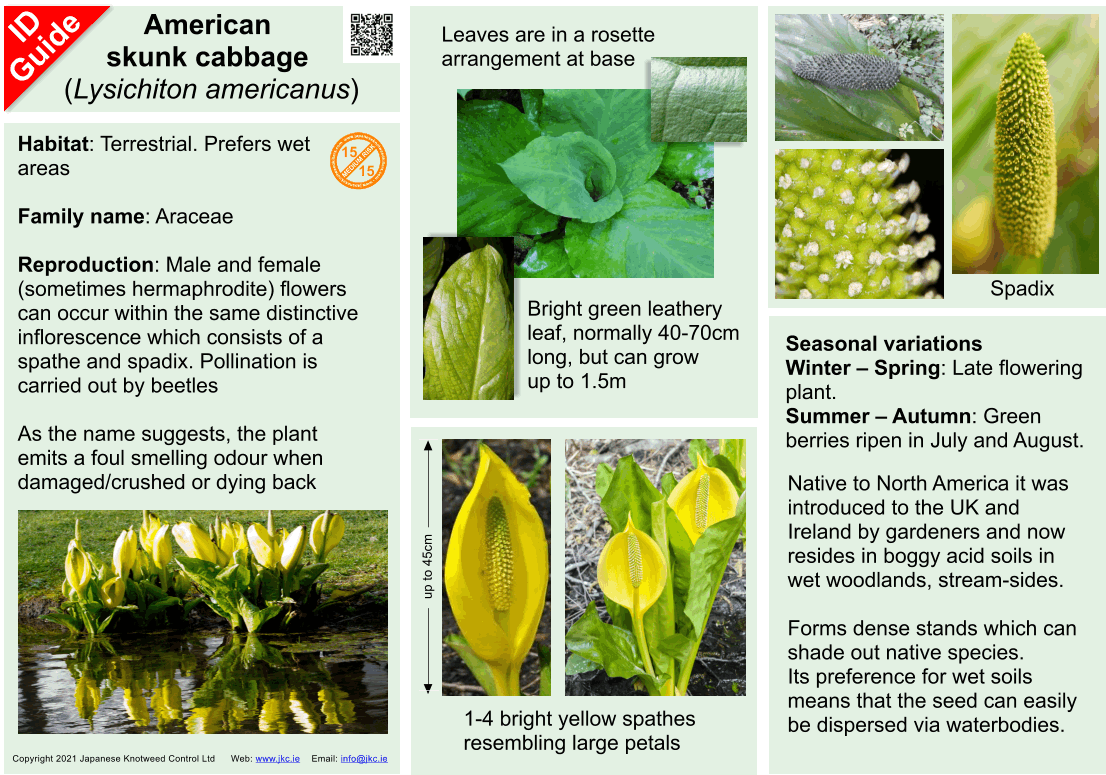

Ireland: Kerry - Dublin - Cork - Waterford - Roscommon - Galway - Belfast
UK: London - Manchester - Newcastle - Cardiff - Liverpool


American skunk cabbage
Invasive Species Information
What is American skunk cabbage - (Lysichiton americanus)?
Habitat: Terrestrial. Needs wet areas.
Distribution in Ireland: Sparse distribution but locally abundant in some places.
Status: Established
Family name: Araceae.
Reproduction: Male and female (sometimes hermaphrodite) flowers can occur within the same distinctive inflorescence which consists of a spathe and spadix. Pollination is carried out by beetles in North America.


Lysichiton americanus spathe & spadix

Lysichiton americanus

Lysichiton americanus

Lysichiton americanus spathe & spadix
American Skunk-Cabbage
Native to North America it was introduced to Ireland by gardeners and now resides in boggy acid soils in wet woodlands, streamsides and pond margins. American skunk cabbage is identified by a strong skunk-like smell, large yellow flowers and grows to 90cm height. It can be invasive but the impacts are currently unknown.
Colour: Large green leaf surrounds a yellow spathe within which is a green/yellow spadix (a spike of inflorescence).
Smell: As the name suggests, the plant emits a foul smelling odour when damaged/crushed or when dying back.
Size: Can grow up to 1.5 metre

How To Identify American skunk cabbage?
American Skunk-Cabbage ID Guide

Spadix

Spathe & Spadix

Leaves
Why Is American skunk cabbage A Problem?
Forms dense stands which can shade out native species.
Its preference for wet soils means that the seed can easily be dispersed via waterbodies.
European Communities (Birds and Natural Habitats) Regulations 2011 non-native invasive plant species A-Z (Updated 2017)
There are currently 35 invasive plant species listed in the European Communities (Birds and Natural Habitats) Regulations (annex 2, Part 1)...
Click on a species from the following list to find out more regarding non-native species subject to restrictions under Regulations 49 and 50
-
American Skunk-Cabbage - Lysichiton americanus
-
Red Alga - Grateloupia doryphora
-
Wakame - Undaria pinnatifida
-
Waterweeds - Elodea (all species)